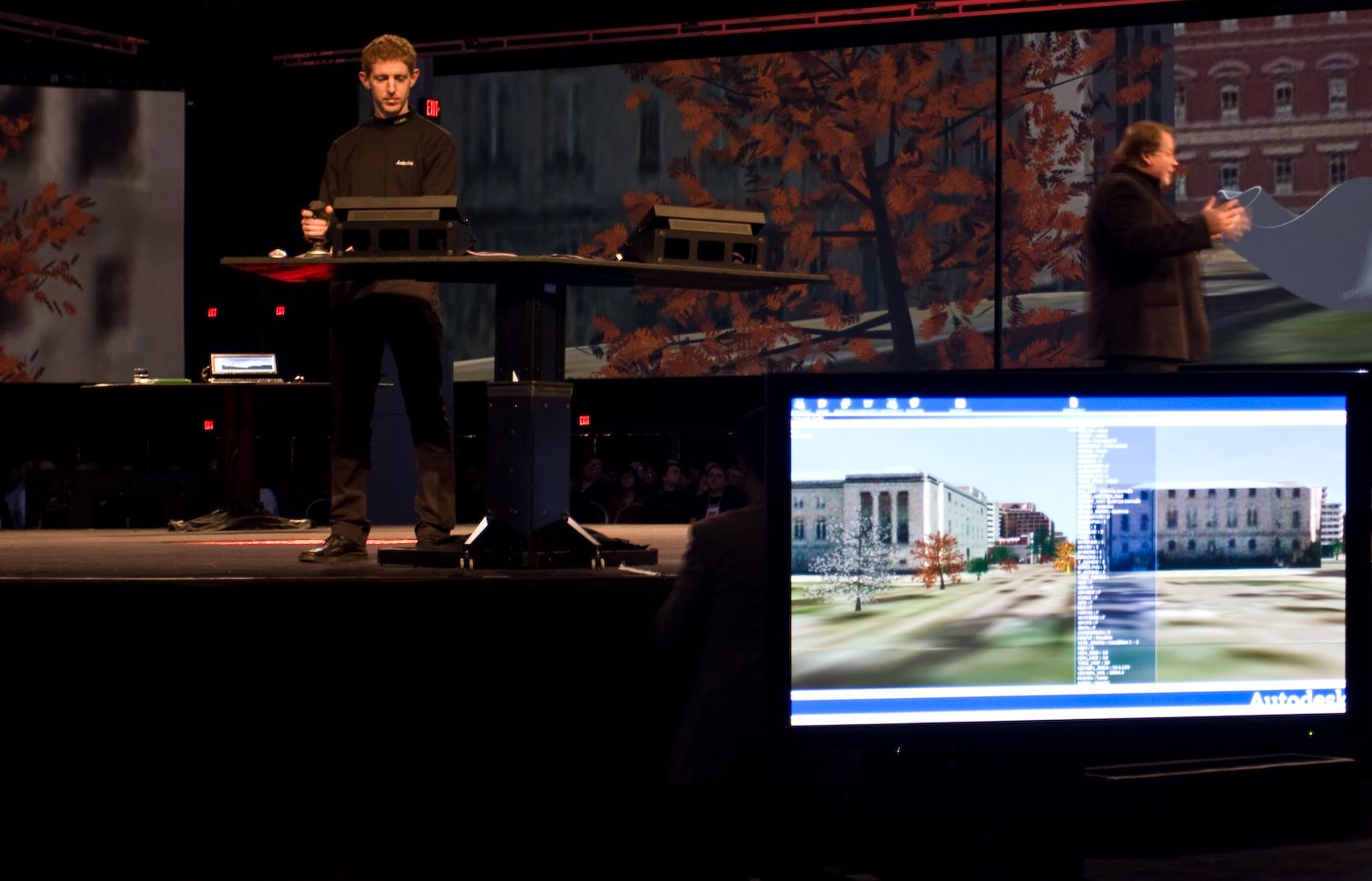Research Conversations with Hans Kellner
Reflecting on three decades at Autodesk
During his 30 years at Autodesk (so far) Hans Kellner has seen a lot of changes. But what’s remained the same – the company’s commitment to its people and a passionate employee base – are part of why he’s been here so long. In our recent conversation, Hans reflects on some of his favorite projects during his three decades at Autodesk.
Talk about your role at Autodesk.
I’m a part of Research Engineering and my team includes a mix of people working on robotics, exploring new interaction techniques like natural-language driven interfaces, and UX research. My focus in Research has been on emerging technologies. Both AR and VR have seemingly been emerging for a while, and I’ve done a lot of work exploring in that domain. It’s helpful to understand these technologies and how they might solve problems for our customers.
For example, most of the time our customers are using 2D interfaces, like a desktop or laptop, to create and view 3D models. With a 3D immersive device, like a VR headset, you can provide new interaction techniques that let customers better understand and manipulate what they’re creating. My belief is that creating and viewing 3D models in 3D is a better and more natural form of interaction.
But there are a lot of limitations with these devices and I’m trying to understand that. Where can the devices be useful, where might they be a hinderance and why? How can we solve that with better UX? Can we change the way people imagine and create things?
What are some of the favorite projects you’ve worked on?
Years ago, we were working on Project Metropolis, an early version of Infraworks. It became a part of the AU mainstage demonstration where there were 22 or 24 HD projection screens that created a 360-degree panoramic view around the mainstage. We had to get the software running on a desktop computer for each of the projections and synch them together to produce a real-time view. I was tasked with being on the mainstage and controlling the application with a joystick during the scripted dialog. It led to many sleepless nights, but the result was amazing. At first, people thought they were seeing a movie and when they realized I was onstage running it all in real time, they were impressed. No one had ever seen anything like that, and it was spectacular. All those involved did an amazing job.

Hans “flies” through Washington, D.C. on the mainstage at AU 2007
Another project I am fond of was when I was tasked with replacing the core of AutoCAD with a new event driven application framework. That was many hours of single stepping through core code to understand the logic. But when I was able to get the AutoCAD drawing view to display and interact, it was very fulfilling.
I was also part of the first UI team at Autodesk. You would laugh seeing how many duplicate icons we found just for copy and paste. My manager, Gary Lang, had the foresight to create that team.
One of my early interests was learning and developing multi-touch interactions. We had received a large Perceptive Pixel multi-touch display and I set out to take advantage of it. That exploration led to collaborations with Microsoft and Wacom and eventually to my joining the Research organization.
I am also immensely proud of the projects done by interns that I worked with over the years.
In addition to the core of the company staying the same, what are some other things about working at Autodesk that remain unchanged over the last 30 years?
I appreciate that there are a lot of passionate creative people at Autodesk. It is nice to see and talk to people who are passionate about their jobs and what they are doing and making. That’s very motivating.
What do you like to do in your free time?
I enjoy being outdoors as much as possible. That includes back country skiing, hiking, and a lot of cycling. A lot.
Get in touch
Have we piqued your interest? Get in touch if you’d like to learn more about Autodesk Research, our projects, people, and potential collaboration opportunities
Contact us